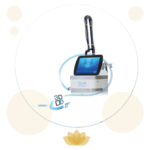
Email marketing is a powerful tool for businesses to reach their target audience, build brand awareness, and ultimately drive sales. However, with so many emails flooding inboxes every day, it’s more important than ever to stand out from the crowd and make an impact. One of the most effective ways to do this is through email marketing personalization tailoring your email content to specific recipients based on their individual preferences, behaviors, and interests. By doing this, you can create a more engaging and relevant experience for your subscribers, which can lead to increased open and click-through rates, as well as higher conversion rates.In this blog, we’ll explore the importance of email personalization, some best practices for implementing it in your email marketing strategy, and some tools and techniques you can use to make your emails more personalized.








